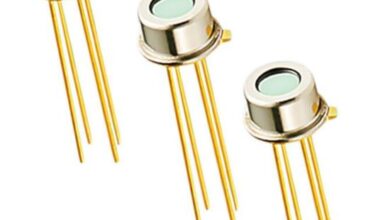The Ins and Outs of I/O Controllers: What They Are and How They Work

In today’s technology-driven world, I/O controllers are a crucial component in many devices, from computers and gaming consoles to industrial automation systems. I/O, short for input/output, controllers act as the interface between a device and its peripherals, enabling the exchange of data and commands. In this article, we’ll dive into what I/O controllers are, how they work, and their various types and applications.
What is an I/O Controller?
An I/O controller, short for Input/Output controller, is a hardware component that acts as the interface between a device and its peripherals. Its primary function is to manage the exchange of data and commands between the device and its peripherals, enabling the device to receive input and send output. I/O controllers can be found in various devices and systems, such as computers, gaming consoles, industrial automation systems, and networking devices. They typically consist of input and output circuitry and manage data transfer between the device and its peripherals.
How Does an I/O Controller Work?
I/O controllers typically consist of two parts: the input circuitry and the output circuitry. The input circuitry receives signals from the device’s peripherals, such as a keyboard or mouse, and converts them into digital data that the device can understand. The output circuitry does the opposite, converting digital data from the device into signals that the peripherals can interpret.
In addition to converting signals, I/O controllers also manage data transfer between the device and its peripherals. This involves setting up communication channels and managing the flow of data to ensure efficient and error-free transfer.
Types of I/O Controllers
There are several types of I/O controllers, each designed for specific applications. Here are some of the most common types:
- Serial I/O Controllers: These controllers manage serial communication, which involves transmitting data bit by bit over a single communication line. Examples of serial communication include RS-232 and USB.
- Parallel I/O Controllers: These controllers manage parallel communication, which involves transmitting multiple data bits simultaneously over multiple communication lines. Examples of parallel communication include PCI and ISA.
- Network I/O Controllers: These controllers manage communication over a network, enabling devices to exchange data and commands over a LAN or WAN.
- RAID Controllers: These controllers manage data storage in a RAID (redundant array of independent disks) system, which involves combining multiple hard drives to improve performance and data redundancy.
Applications of I/O Controllers
I/O controllers have numerous applications across various industries. Here are some examples:
- Industrial Automation: I/O controllers are widely used in industrial automation systems, where they manage communication between sensors, actuators, and other devices.
- Gaming: I/O controllers are essential in gaming consoles, where they manage communication between controllers, keyboards, and other input devices.
- Networking: I/O controllers are used in networking devices like routers and switches, where they manage communication between devices on a network.
- Data Storage: I/O controllers are used in RAID systems, where they manage data storage across multiple disks.
Conclusion
In conclusion, I/O controllers are a crucial component in many devices and systems, enabling efficient and error-free data transfer between a device and its peripherals. With various types and applications, I/O controllers have a wide range of uses across industries. By understanding what I/O controllers are and how they work, you can gain a deeper appreciation for the technology that drives our modern world.






